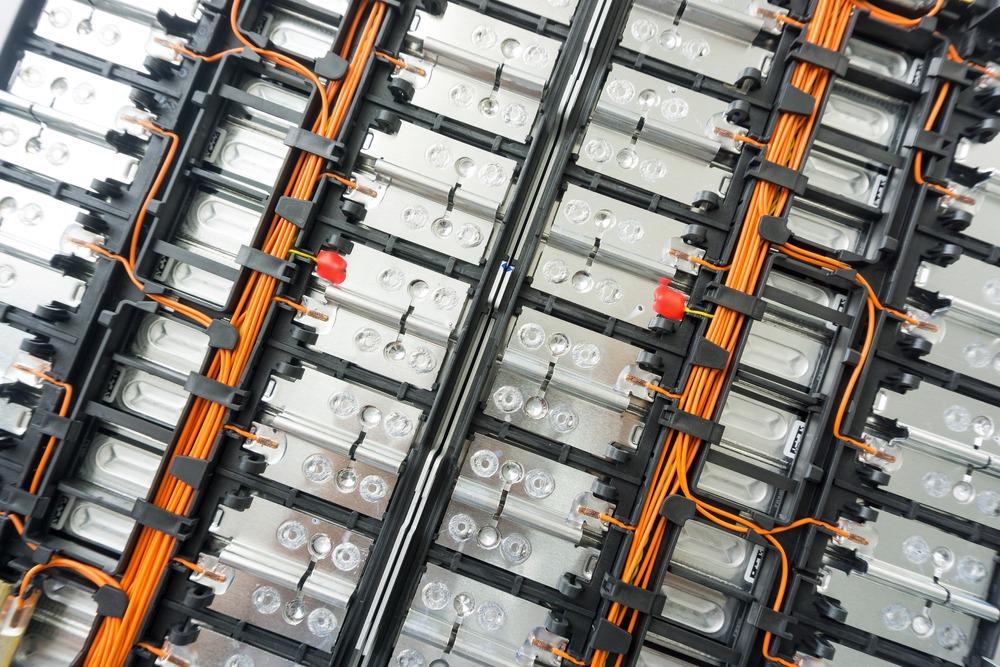A non-ceramic solid-state electrolyte based on a graphene oxide (GO) aerogel framework filled with polyethylene oxide was designed in a study published recently in the journal Langmuir.

Study: Graphene Oxide Aerogel Foam Constructed All-Solid Electrolyte Membranes for Lithium Batteries. Image Credit: Smile Fight/Shutterstock.com
Solid-State Electrolytes – The Future of Li-ion Batteries
Owing to their excellent energy density, high performance, and minimal self-discharging rate, lithium-ion (Li-ion) batteries perform a key role in electric cars.
On the other hand, Li-ion batteries, include combustible liquid electrolytic materials, which may pose major safety issues, restricting their broad adoption.
The solid-state electrolyte (SSE) replaces the standard organic liquid electrolyte and is predicted to alleviate safety issues of the batteries such as leaking, heat runaway, and even explosions during operation.
Among some of the present SSEs, multi-phase solid-state electrolytic composites have increased leeway to customize and incorporate the benefits of synthetic ceramic electrolytes and natural polymer-based electrolytes. Such alternatives are viewed as encouraging options for industrial solid-state Li-ion batteries.
Nonflammable gel, for instance, is created by hydrogen-bonding connections or other ways and used as an interstitial layer to enhance the effectiveness of SSE batteries.
Current Problems in SSEs
Due to its low weight, superior flexibility, and remarkable producibility, poly(ethylene oxide) (PEO)-based polymeric electrolyte is among the most intensively investigated SSEs. Furthermore, PEO has a somewhat crystalline helix structure, and its oxyethylene components have strong alkali-metal salt solubility.
Although increasing the heat may raise the fraction of disorganized phases, the higher working temperatures may cause semi-melting or melting of the polymeric electrolyte layer during both chargings as well as discharging cycles, which could potentially lead to perforation by lithium dendrites.
Different Approaches for Solving the SSE Problems
Several approaches have been undertaken to resolve the conflict between ionic conductivity and Li dendrites. One approach is to utilize fillers or plasticizers like nanoscale SiO2, cationic liquids, and trace quantities of grafted graphene oxide (GO), which may lower the concentration of PEO crystal areas while increasing the quantity of unbound ethylene oxide (EO) sections.
However, owing to aggregation, certain nanosized materials often diminish the acid-base engagement among each other and the Li salt.
Owing to the overzealous chase of ionic conductance, this technique reduces the electrolyte's capacity to suppress dendrites. Another thing that can be done is is to customize the framework of electrolytes.
To enhance ionic deposition on the electrode's surface, a simple method is to adopt a multilayer architecture, such as two or three-layer, and to pick electrolytes with varied interfacial characteristics.
Multilayering, on the other hand, could raise the thickness of the electrolytes, influencing ionic conductance. Furthermore, an interior architectural design is crucial since modifying the architecture is a good way to tackle the solid electrolyte problems.
Furthermore, even though lithium electrolytic deposition behavior is an important aspect, homogenizing it has only been scarcely researched thus far.
Advantages of Using GO with a Network Skeleton
Graphene oxide has a high concentration of oxygen-carrying functional groups, which have strong affinities for lithium ions and promote the dissolution of lithium salts.
In the ionic conduction mechanism, the network structure serves two primary tasks. Firstly, the extensive GO network within the membrane may help in making ion-current dispersion more consistent, preventing the linear development of lithium dendrites and increasing the life of the battery.
Secondly, as a micro-sized inorganic supplement, GO may disturb the dispersion of organized crystalline regions in PEO to some amount, enhancing ionic conduction and allowing the batteries to be evaluated routinely.
Meanwhile, GO is less expensive and simpler to make, and it can be readily blended with other materials and polymers to improve qualities such as tensile strength.
Results of the Study
The high-porosity network structure of the GSPE, the graphene oxide aerogel/PEO composite electrolyte developed in this research, resulted in significant Li-ion conduction.
The GO architecture enhanced the unstructured components of the electrolyte, facilitated lithium salt dissolution, and improved interaction among lithium ions and unbounded segments.
The built LFP| GSPE|Li battery retained about 94 % of its capacity following 100 cycles and could be operated continuously for over 450 hours.
The team discovered that GSPE has an excellent homogenizing ability for Li deposition, successfully minimizing battery short circuits produced by Li dendrites. This multilayer network structure's development concept is crucial not only for SSE electrolytes, but also for the future iterations of Li-ion batteries with higher energy densities and better safety criteria compliance.
Reference
Zhou, X., Lv, P., Li, M., Xu, J., Cheng, G., Yuan, N., & Ding, J. (2022). Graphene Oxide Aerogel Foam Constructed All-Solid Electrolyte Membranes for Lithium Batteries. Langmuir. Available at: https://pubs.acs.org/doi/10.1021/acs.langmuir.1c03432
Disclaimer: The views expressed here are those of the author expressed in their private capacity and do not necessarily represent the views of AZoM.com Limited T/A AZoNetwork the owner and operator of this website. This disclaimer forms part of the Terms and conditions of use of this website.